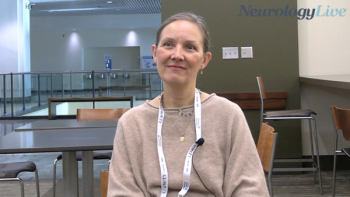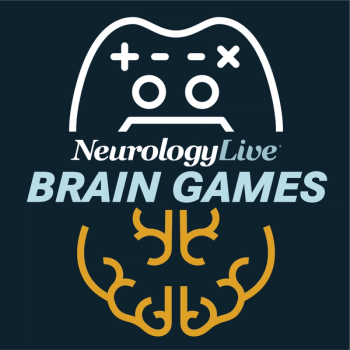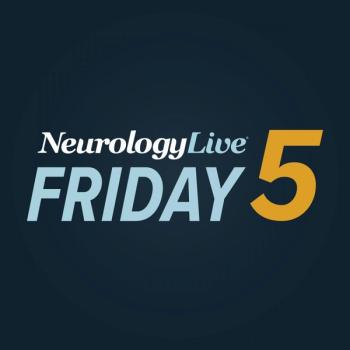
Two-Year CHIMES Study Data Highlight Effect of Ocrelizumab in Diverse Relapsing MS Patient Population
Key Takeaways
- Ocrelizumab treatment improved perceived symptoms and fatigue in Black and Hispanic/Latino RMS patients, with notable fatigue improvement in Hispanic patients.
- Cognitive improvements were observed in Hispanic patients, while Black patients showed no significant cognitive changes.
New findings reveal ocrelizumab significantly improves symptoms, cognition, and fatigue in Black and Hispanic patients with relapsing multiple sclerosis.
Newly presented data from the phase 4 CHIMES study (NCT04377555) revealed that treatment with ocrelizumab (Ocrevus; Genentech) has therapeutically beneficial impacts on perceived symptoms, cognition, and fatigue among Black and Hispanic/Latino patients with relapsing multiple sclerosis (RMS).
CHIMES, a long-standing study, tested the clinical and radiological outcomes of Black/African American and Hispanic/Latino patients with RMS, two historically underrepresented groups, on ocrelizumab, an FDA-approved medication. Presented at the
Led by Mitzi Joi Williams, MD, founder and chief executive officer of Joi Life Wellness Group Multiple Sclerosis Center, the main outcomes used were the Brief Illness Perception Questionnaire (IPQ), MS Impact Scale (MSIS-29), Modified Fatigue Impact Scale (MFIS), SymptoMScreen, and Symbol Digit Modalities Test (SDMT). Through 96 weeks of treatment, results showed improvements in patient symptom perceptions, specifically the Brief IPQ (–4.8 [SD, 10.7]; range, 0-80) and MSIS-29 physical (–4.8 [SD, 17.4]; range, 0-100) and psychological (–5.4 [SD, 21.7]) scores.
While the study featured more Black (62%) than Hispanic (38%) patients, results showed that fatigue was more notably improved among Hispanic patients (–4.3 [SD, 14.6]) vs –1.2 [SD, 15.7]). More encouragingly, fatigue was improved across the entire cohort, with mean changes of –2.5 (SD, 15.3; possible range, 0-84). Furthermore, SymptoMScreen fatigue scores also improved in both groups, with changes of –0.3 (SD, 1.6; possible range, 0-10) for the entire CHIMES cohort.
READ MORE:
Additional data from the poster showed that cognitive scores improved among Hispanic patients with RMS (MFIS: –2.0 [SD, 7.2]; SymptoMScreen: –0.3 [SD, 1.3]) but not in Black/African American patients (MFIS: 0.5 [SD, 7.6]; SymptoMScreen: –0.01 [SD, 1.4]). SDMT scores improved in both Black (5.7 [SD, 11.5]) and Hispanic (6.2 [SD, 10.5]) cohorts, with only 16 participants (11%) showing a decline of more than 4 points.
One-year findings from CHIMES were presented at last year’s CMSC meeting by Lilyana Amezcua, MD, associate professor of clinical neurology at the University of Southern California’s Keck School of Medicine. In the analysis, approximately half of Black/African American patients with RMS (46.0%) and more than half of Hispanic/Latino patients with RMS (58.0%) achieved 48-week no evidence of disease activity (NEDA) following treatment with ocrelizumab.2
Other findings from Amezcua et al showed that a majority of the Black/African American and Hispanic/Latino patients with RMS reported no relapses (94.7%; 95.7%, respectively), 24-week confirmed disability progression (94.7%; 94.2%, respectively), or T1 gadolinium-enhancing lesions (94.7%; 97.1%, respectively). Notably, investigators observed no new/enlarging T2 lesions in 46% of Black/African American patients with RMS and in 63.8% of Hispanic/Latino patients with RMS. While the study’s primary end point was 48-week NEDA, defined as a proportion of patients free from protocol-defined events, the study also included surveys from the Work Productivity and Activity Impairment Questionnaire (WPAI).
Among participants treated with ocrelizumab, researchers reported reductions in WPAI scores, signifying less impairment, for each domain. This included mean changes of −5.5 for absenteeism (SD, 27.2), −1.6 for presenteeism (SD, 27.4), −5.5 for work productivity (SD, 30.5), and −6.1 for activity impairment (SD, 28.5). Although the trial had no reports of death, 80.2% of participants had at least 1 adverse event, 5.5% had at least 1 serious adverse, and 29.1% had infusion-related reactions.
REFERENCES
1. Williams MJ, Chinea AR, Amezcua L, et al. (DMT27) Fatigue and Cognition Burden Among Black/African American and Hispanic and Latino People With Relapsing Multiple Sclerosis Receiving Ocrelizumab for 2 Years. Presented at: 2025 CMSC Annual Meeting; May 28-31. Phoenix, Arizona. Abstract DMT27
2. Amezcua L, Monson NL, Williams MJ, et al. One-Year Analysis of Ocrelizumab Treatment in Black/African American and Hispanic/Latino Patients With Relapsing Multiple Sclerosis From the CHIMES Trial. Presented at: 2024 CMSC Annual Meeting; May 29-June 2; Nashville, TN. Abstract DMT33
Newsletter
Keep your finger on the pulse of neurology—subscribe to NeurologyLive for expert interviews, new data, and breakthrough treatment updates.



































